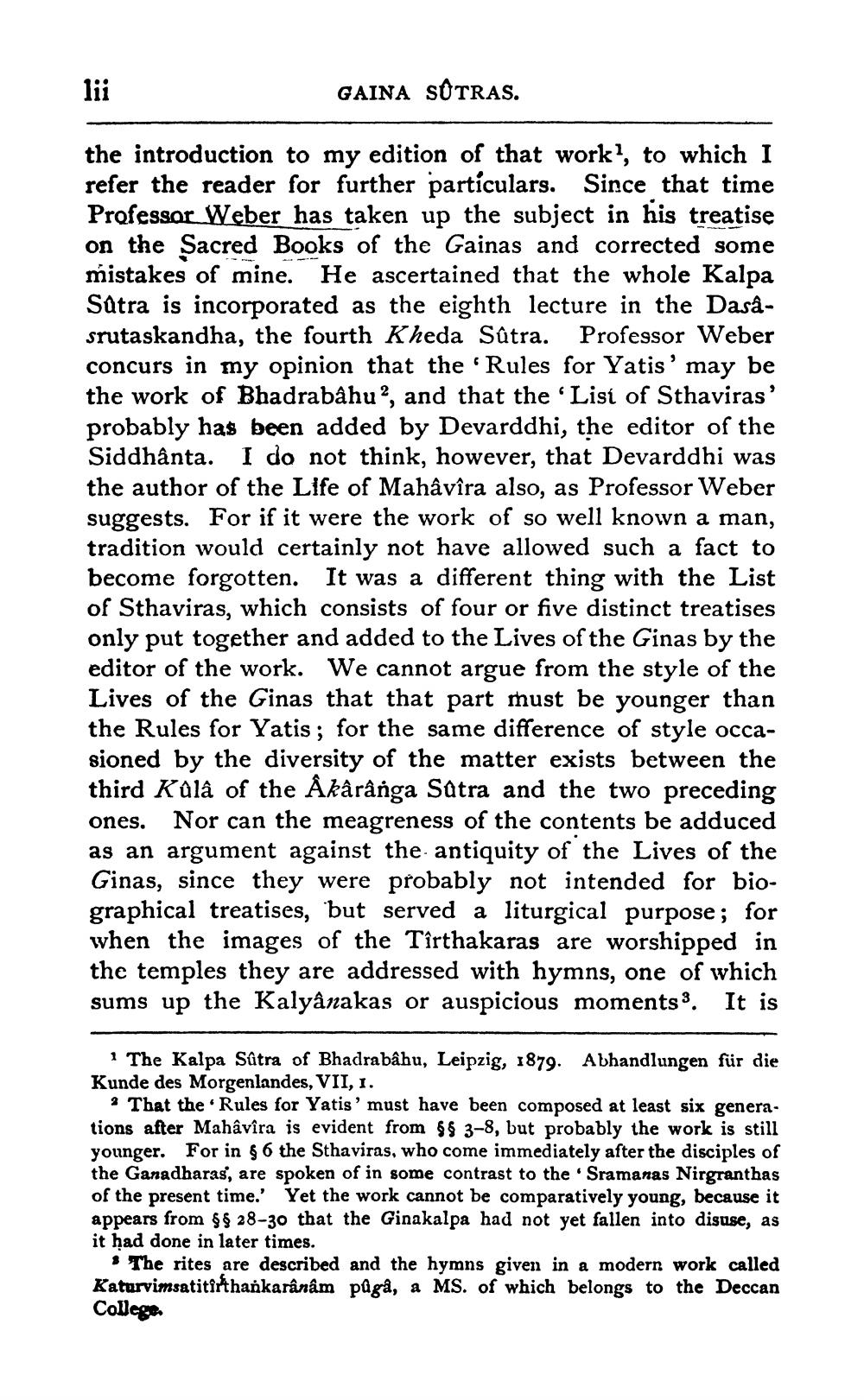________________
lii
GAINA SOTRAS.
the introduction to my edition of that work!, to which I refer the reader for further particulars. Since that time Professor Weber has taken up the subject in his treatise on the Sacred Books of the Gainas and corrected some mistakes of mine. He ascertained that the whole Kalpa Satra is incorporated as the eighth lecture in the Dasasrutaskandha, the fourth Kheda Sûtra. Professor Weber concurs in my opinion that the 'Rules for Yatis' may be the work of Bhadrabahu?, and that the 'List of Sthaviras' probably has been added by Devarddhi, the editor of the Siddhânta. I do not think, however, that Devarddhi was the author of the Life of Mahâvîra also, as Professor Weber suggests. For if it were the work of so well known a man, tradition would certainly not have allowed such a fact to become forgotten. It was a different thing with the List of Sthaviras, which consists of four or five distinct treatises only put together and added to the Lives of the Ginas by the editor of the work. We cannot argue from the style of the Lives of the Ginas that that part must be younger than the Rules for Yatis; for the same difference of style occasioned by the diversity of the matter exists between the third Kulâ of the Åkârânga Satra and the two preceding ones. Nor can the meagreness of the contents be adduced as an argument against the antiquity of the Lives of the Ginas, since they were probably not intended for biographical treatises, but served a liturgical purpose; for when the images of the Tîrthakaras are worshipped in the temples they are addressed with hymns, one of which sums up the Kalyanakas or auspicious moments. It is
1 The Kalpa Satra of Bhadrabahu, Leipzig, 1879. Abhandlungen für die Kunde des Morgenlandes, VII, 1.
That the Rules for Yatis' must have been composed at least six generations after Mahâvîra is evident from $6 3-8, but probably the work is still younger. For in 86 the Sthaviras, who come immediately after the disciples of the Ganadharas, are spoken of in some contrast to the Sramanas Nirgranthas of the present time. Yet the work cannot be comparatively young, because it appears from $ $ 28-30 that the Ginakalpa had not yet fallen into disuse, as it had done in later times.
* The rites are described and the hymns given in a modern work called Katurvimsatititthankarânâm pågå, a MS. of which belongs to the Deccan College




